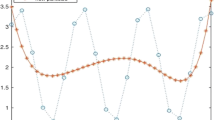Abstract
The ability to navigate mobile robots in the human environment is needed to keep a safe and reliable way to overcome the loss of the mobile robot position. To solve the localization problem for a mobile robot, particle filter algorithm was used to achieve the required robustness and accuracy. Particle filter is an algorithm based on estimation theory that used a set of particles to maintain hypothesis of the position of the mobile robot. In this paper, two objectives of the research project were described and presented. First, the simulation of particle filter localization algorithm in robot operating system (ROS). Second, the performance of the localization algorithm based on the accuracy of the robot’s state. In the simulation, the number of particles were used as parameter that will cause variation in the accuracy of the localization algorithm. It is concluded that the higher number of particles used will give a better accuracy of the robot’s state.
Access this chapter
Tax calculation will be finalised at checkout
Purchases are for personal use only
Similar content being viewed by others
References
Wozniak P, Afrisal H, Esparza RG, Kwolek B (2018) Scene recognition for indoor localization of mobile robots using deep CNN. In: Lecture notes in computer science (including subseries Lecture notes in artificial intelligence and lecture notes in bioinformatics)
Zhang H, Zhang C, Yang W, Chen CY (2015) Localization and navigation using QR code for mobile robot in indoor environment. In: 2015 IEEE international conference on robotics and biomimetics (ROBIO), December 2015, pp 2501–2506
Pandey A (2017) Mobile robot navigation and obstacle avoidance techniques: a review. Int Robot Autom J 2(3)
Ashokaraj I, Tsourdos A, Silson P, White B (2005) Sensor based robot localisation and navigation: using interval analysis and nonlinear Kalman filters. Trans Can Soc Mech Eng
Shue SL, Shetty NS, Browne AF, Conrad JM (2018) Particle filter approach to utilization of wireless signal strength for mobile robot localization in indoor environments. Int J Wirel Mob Netw 10(4):21–38
Mirkhani M, Forsati R, Shahri AM, Moayedikia A (2013) A novel efficient algorithm for mobile robot localization. Rob Auton Syst 61(9):920–931
Pomárico-Franquiz J, Khan SH, Shmaliy YS (2014) Combined extended FIR/Kalman filtering for indoor robot localization via triangulation. Meas J Int Meas Confed 50(1):236–243
Bhat NN (2012) Robot localization by particle filter using visual database. (1):22–27
Wang X, Zhang C, Liu F, Dong Y, Xu X (2017) Exponentially weighted particle filter for simultaneous localization and mapping based on magnetic field measurements. In: IEEE transactions on instrumentation and measurement, vol 66, no 7, pp 1658–1667, July. https://doi.org/10.1109/TIM.2017.2664538
Zaman S, Slany W, Steinbauer G (2011) ROS-based mapping, localization and autonomous navigation using a Pioneer 3-DX robot and their relevant issues. In: 2011 Saudi international electronics, communications and photonics conference (SIECPC), May 2014
Thrun S, Fox D, Burgard W, Dellaert F (2001) Robust Monte Carlo localization for mobile robots. Artif Intell 128(1–2):99–141
Santos A, Cunha A, Macedo N (2019) Static-time extraction and analysis of the ROS computation graph. In: 2019 Third IEEE international conference on robotic computing (IRC), pp. 62–69
Acknowledgements
The authors would like to thank the Centre for Research and Innovation Management (CRIM) of Universiti Teknikal Malaysia Melaka (UTeM) for the support under the grant number of RACER/2019/FKEKK-CETRI/F00404. A great appreciation goes to Centre for Telecommunication Research & Innovation (CeTRI), Fakulti Kejuruteraan Elektronik dan Kejuruteraan Komputer (FKEKK), Universiti Teknikal Malaysia Melaka (UTeM) and the Ministry of Higher Education of Malaysia for moral and operational support throughout the project.
Author information
Authors and Affiliations
Corresponding author
Editor information
Editors and Affiliations
Rights and permissions
Copyright information
© 2022 The Author(s), under exclusive license to Springer Nature Singapore Pte Ltd.
About this paper
Cite this paper
Sahabuddin, N.N.H.M., Yatim, N.M., Noh, Z.M., Wahab, N.A. (2022). Performance Analysis of Particle Filter Localization Algorithm for Mobile Robot. In: Isa, K., et al. Proceedings of the 12th National Technical Seminar on Unmanned System Technology 2020. Lecture Notes in Electrical Engineering, vol 770. Springer, Singapore. https://doi.org/10.1007/978-981-16-2406-3_7
Download citation
DOI: https://doi.org/10.1007/978-981-16-2406-3_7
Published:
Publisher Name: Springer, Singapore
Print ISBN: 978-981-16-2405-6
Online ISBN: 978-981-16-2406-3
eBook Packages: Intelligent Technologies and RoboticsIntelligent Technologies and Robotics (R0)




